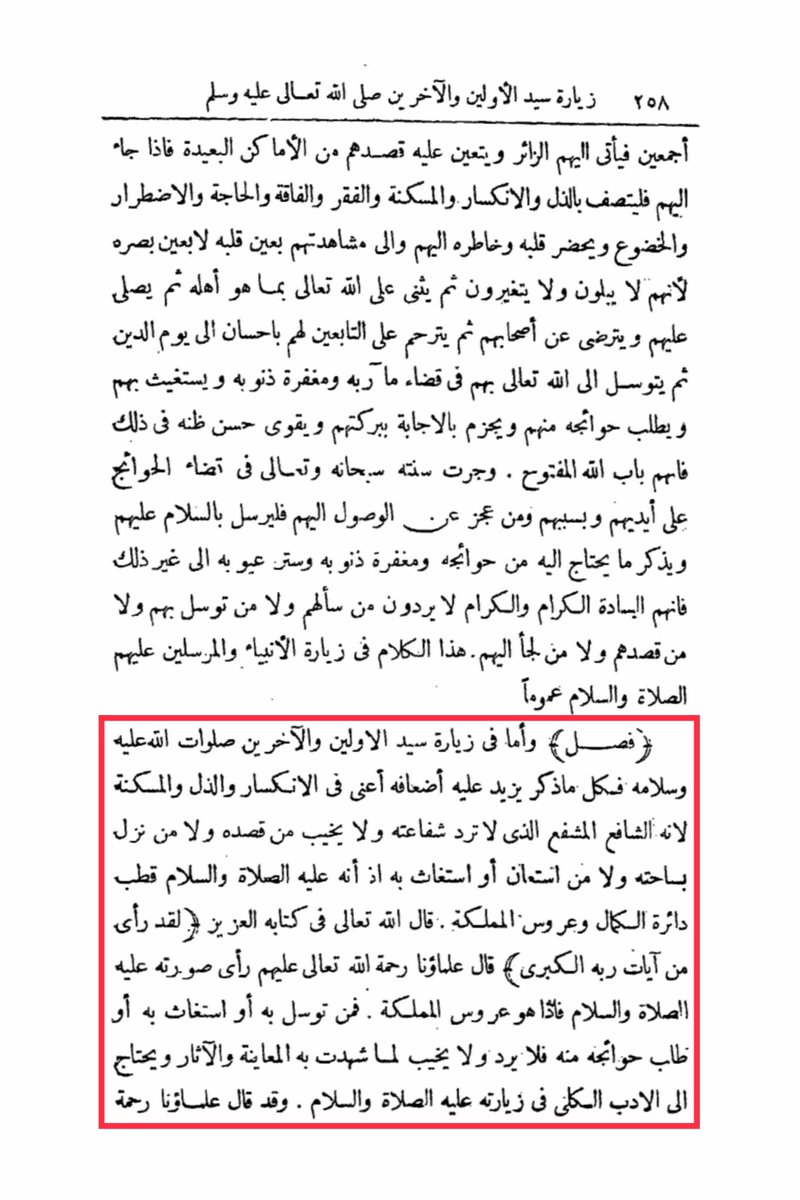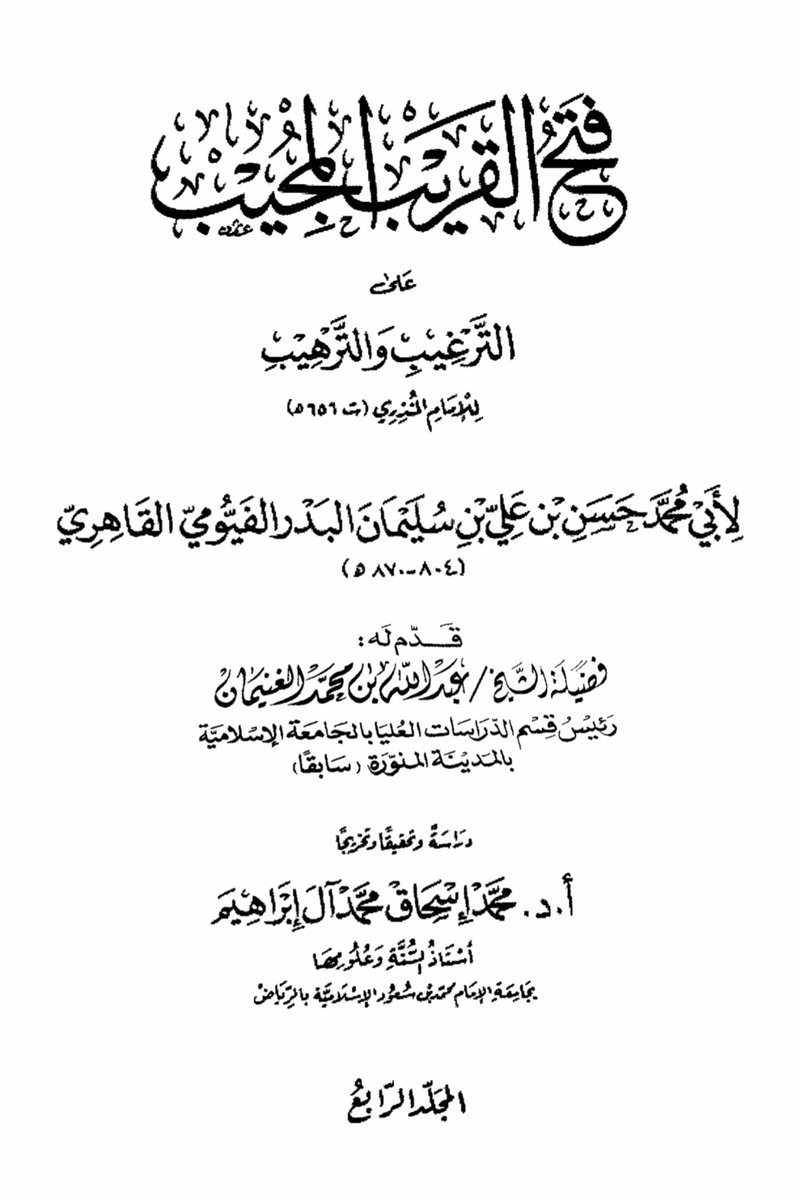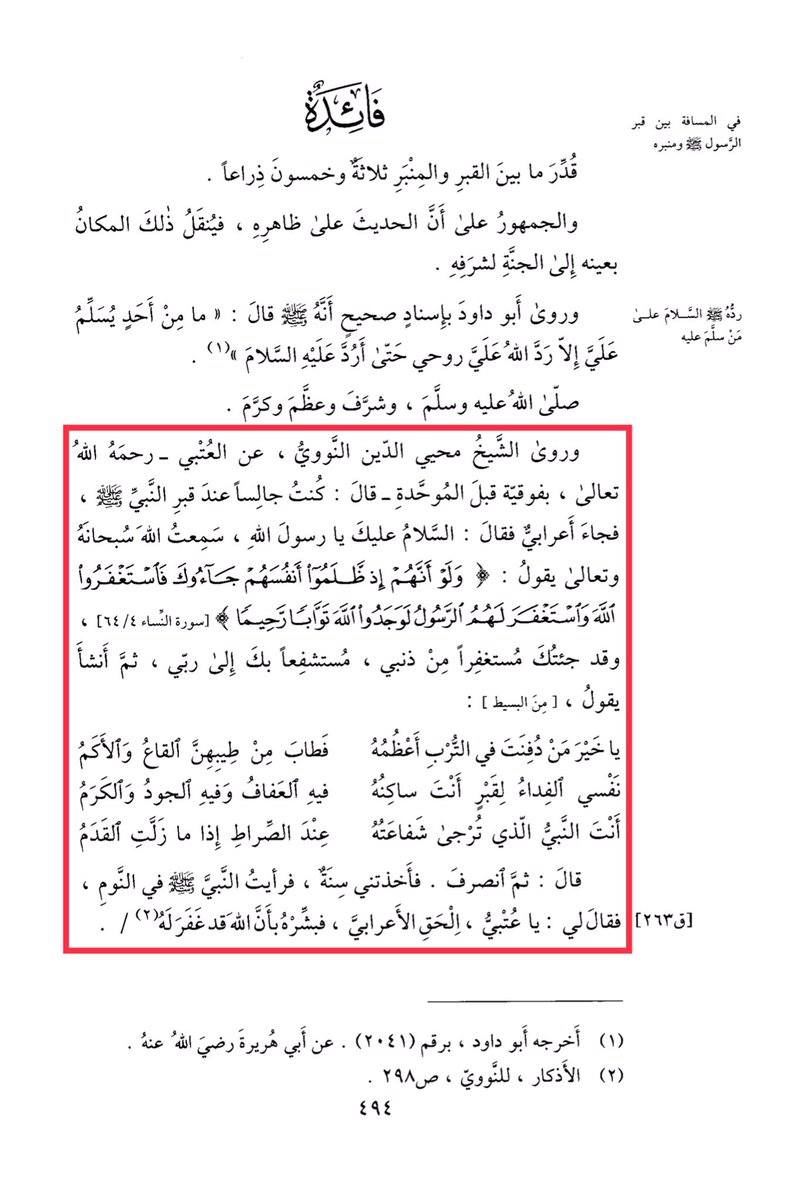﷽
All praise belongs to Allāh ﷻ, who blessed us with the noble opportunity of seeking help and intercession through the best of creation, Sayyidnā Muḥammad ﷺ.
May the peace, blessings and mercy of Allāh ﷻ be upon him for as long as the world remains.
All praise belongs to Allāh ﷻ, who blessed us with the noble opportunity of seeking help and intercession through the best of creation, Sayyidnā Muḥammad ﷺ.
May the peace, blessings and mercy of Allāh ﷻ be upon him for as long as the world remains.
As to what follows;
I have started making a thread in which I shall gather, by the permission of Allāh ﷻ, as many statements of the scholars of Islām as I can, regarding Tawassul, Istishfāʿ and Istighāthah through the Ḥabīb ﷺ.
I have started making a thread in which I shall gather, by the permission of Allāh ﷻ, as many statements of the scholars of Islām as I can, regarding Tawassul, Istishfāʿ and Istighāthah through the Ḥabīb ﷺ.
I shall not mention multiple statements from one scholar, and I shall try to include scholars from all generations.
I hope this thread gives and end to the nonsense of the Khawārij accusing the Muslimīn of Shirk for doing what is agreed upon its permissibility.
I hope this thread gives and end to the nonsense of the Khawārij accusing the Muslimīn of Shirk for doing what is agreed upon its permissibility.
It may take many weeks to complete this thread, so please be patient.
Terminologies
• Whenever I say “the story of ʿUmar”, I mean what Ibn Abī Shaybah (d. 235), Ibn Abī Khaythamah (d. 279), and tens of other later scholars narrated that the people were struck by a drought in the Khilāfah of ʿUmar, then someone went to the grave of the Messenger...
• Whenever I say “the story of ʿUmar”, I mean what Ibn Abī Shaybah (d. 235), Ibn Abī Khaythamah (d. 279), and tens of other later scholars narrated that the people were struck by a drought in the Khilāfah of ʿUmar, then someone went to the grave of the Messenger...
...ﷺ and said, “O Messenger of Allāh! Ask for rain for your Ummah!” Then the Messenger ﷺ came to the man in his dream and told him, “Go to ʿUmar and tell him that water shall be granted to you.” And the narration goes on. From those who authenticated it: Ibn Ḥajar...
...al-Haytamī, Ibn Ḥajar al-ʿAsqalānī, Ibn al-Ramlī, Ibn Kathīr, and others. Others who narrated it and found no issue with it include Ibn ʿAbd al-Barr (d. 463), Muḥibb al-Dīn al-Ṭabarī (d. 694), al-Qasṭallānī (d. 923), Ibn ʿAsākir (d. 571), al-Suyūṭī (d. 911),...
...al-Bayhaqī (d. 458), al-Dhahabī (d. 748), al-Samhūdī (d. 911), al-Zarqānī (d. 1122), Abū Yaʿlā al-Khalīlī (d. 446), Ibn Mandhūr (d. 711), Ibn ʿAllān (d. 1057) and others.
• Whenever I say “the story of al-ʿUtbī”, I mean what the scholars of Manāsik from all Madhāhib narrated, even if it is weak, accepting of its content, that al-ʿUtbī said: “A man came to the grave of the Prophet ﷺ, sent Salām upon him and his two companions,...
...then returned back, facing the Prophet ﷺ, then said: ‘O Messenger of Allāh! I have heard the statement of Allāh ﷻ {And if only, when they wronged themselves, they came to you, sought forgiveness from Allāh, and the Messenger sought forgiveness for them, they would have...
...found Allāh Accepting of Repentance and Merciful}, so I have come to you, seeking forgiveness from my sin and seeing intercession from you to my Lord.’” And the narration goes on. It was narrated by most scholars mentioned previously and more as you shall see in the thread.
These are the two main narrations that I shall allude to by using a short form.
Moving on to the actual topic of the thread— the statements of the scholars of Islām on Tawassul, Istishfāʿ and Istighāthah through the Messenger ﷺ:
Moving on to the actual topic of the thread— the statements of the scholars of Islām on Tawassul, Istishfāʿ and Istighāthah through the Messenger ﷺ:
1) al-Māwardī (d. 450), an important Imām in the Shāfiʿī Madhhab, says in his huge Fiqh encyclopedia titled “al-Ḥāwī” that visiting the grave of the Messenger ﷺ is recommended, then mentions the narration of al-ʿUtbī in which a man sought intercession from the Messenger ﷺ




2) al-Rūyānī (d. 502), Fakhr of Islām, in his “Baḥr al-Madhhab” (which is a very important reference book in the Shāfiʿī Madhhab), mentions the narration of al-ʿUtbī in which a man sought intercession from the Messenger ﷺ, and calls it a “beautiful incident”




3) al-Ghazālī (d. 505), the second Imām al-Shāfiʿī, says in his great book “al-Iḥyāʾ” that it is recommended to say in Ziyārah: “O Allāh! We have obeyed your command, and have intended to seek intercession through your Messenger to You, .... so grant him permission to intercede”




4) al-ʿImrānī (d. 558), Shaykh of the Shāfiʿiyyah in Yemen, in his “al-Bayān” (another very important reference book in the Madhhab) mentions the narration of al-ʿUtbī and the man who did Tashaffuʿ, approving of it




5) al-Nawawī (d. 676), the ultimate authority in the Shāfiʿī Madhhab, says in “al-Īḍāḥ” that our Aṣḥāb cited the story of al-ʿUtbī, approving of it, and that it is the best thing to say in Ziyārah, and that it is desirable to do Tawassul and Tashaffuʿ through the Prophet ﷺ


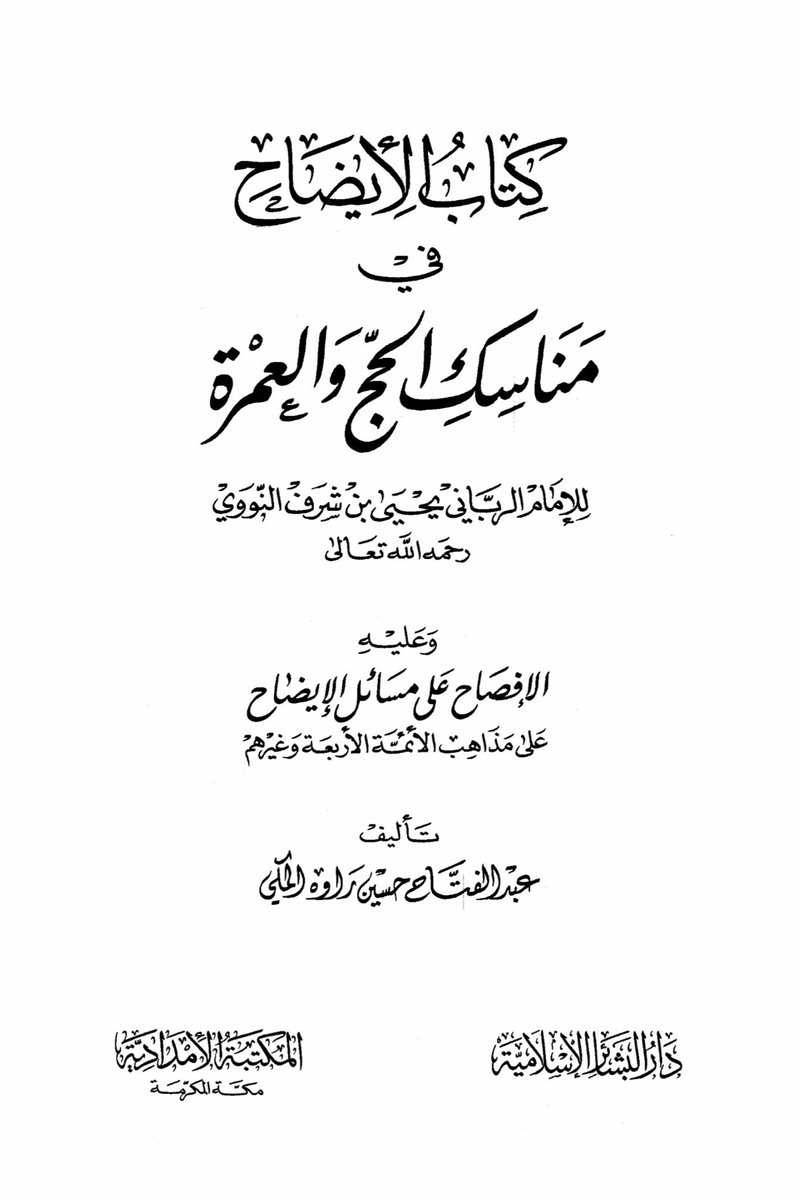
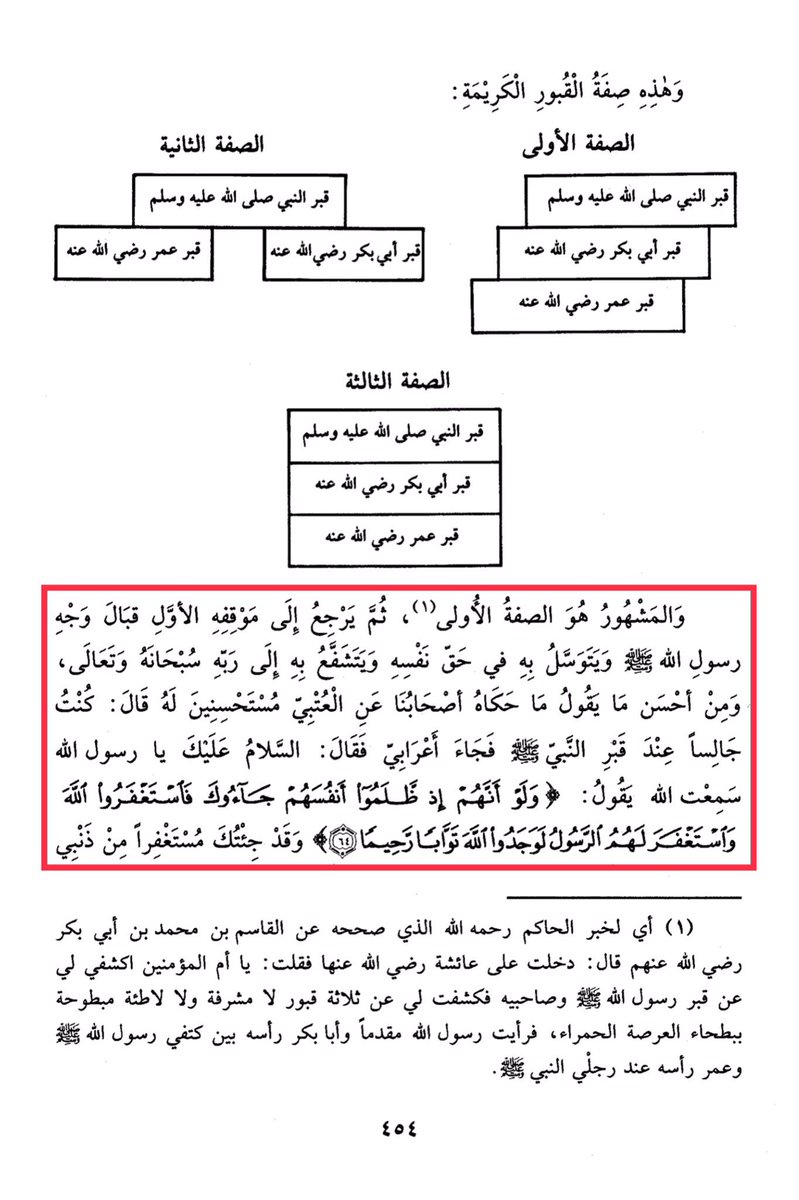
6) Ibn Ḥajar al-Haytamī (d. 974), the greatest Imām of the late Shāfiʿiyyah, says in his footnotes of the above that there is no difference in permissibility between Tashaffuʿ, Tawassul or Istighāthah through any of the Messengers or Awliyāʾ, and authenticates the story of ʿUmar




7) Ibn al-Ramlī (d. 1004), the greatest Imām of the late Shāfiʿiyyah beside al-Haytamī, says the exact same thing- there is no difference in permissibility between Tashaffuʿ, Tawassul or Istighāthah through any of the Messengers or Awliyāʾ, and authenticates the story of ʿUmar



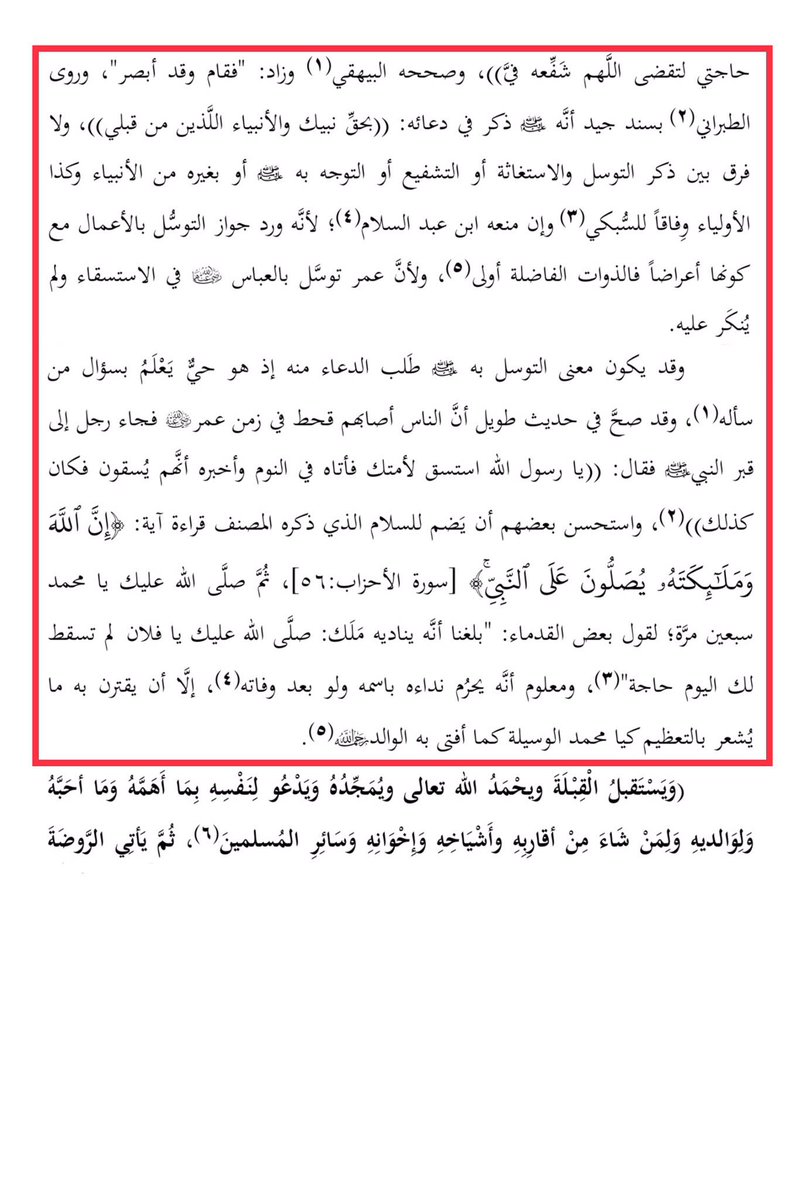
8) al-Khaṭīb al-Shirbīnī (d. 977), another great Shāfiʿī Muḥaqqiq, says in his Sharḥ of “al-Minhāj” that it is recommended to do Tawassul and Tashaffuʿ through the Messenger ﷺ during Ziyārah, and cites the narration of al-Ḥākim about the Tawassul of Ādam ﷺ



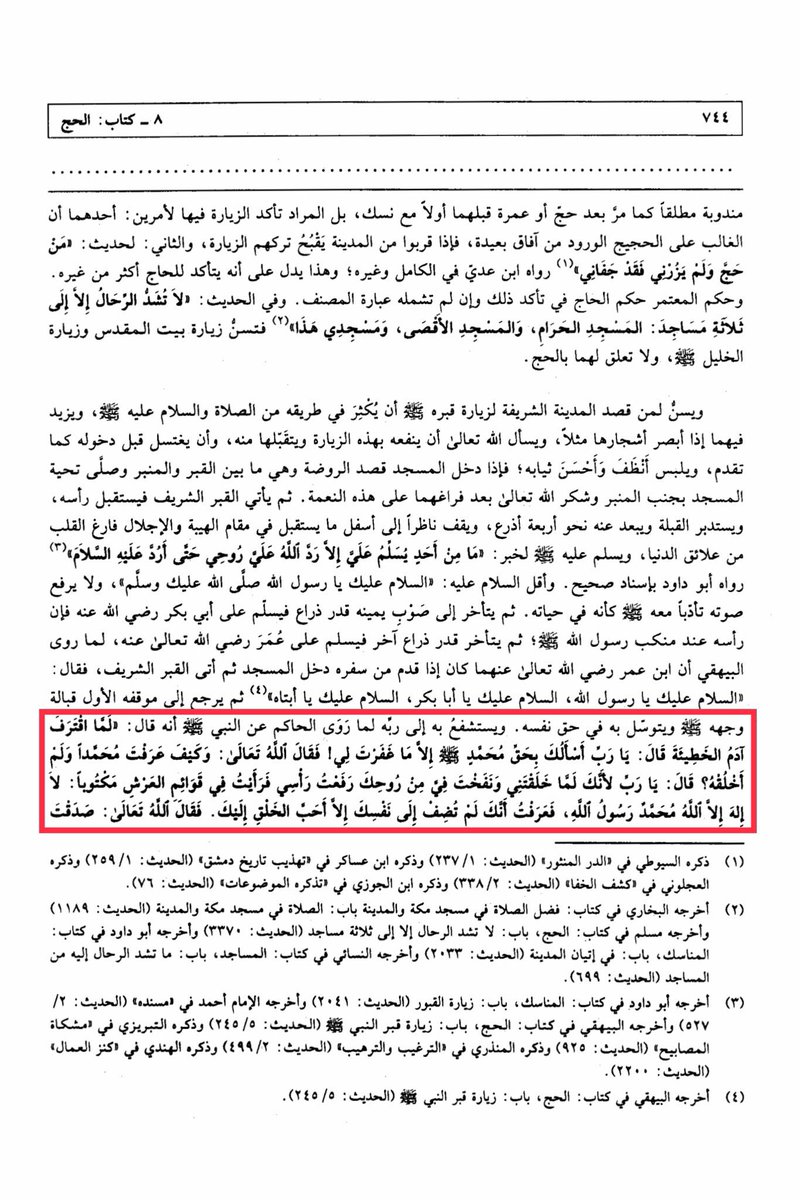
9) al-Ramlī al-Kabīr (d. 957), in his “Fatḥ al-Raḥmān”, quotes al-Nawawī's statement in “al-Majmūʿ”and states that it is recommended to do Tawassul and Tashaffuʿ through the Messenger ﷺ during Ziyārah




10) Zakariyyā al-Anṣārī (d. 926), the Mujaddid of the 9th century and the teacher of al-Ramlī al-Kabīr, al-Shirbīnī and al-Haytamī mentioned above, says in “Fatḥ al-Wahhāb” that it is recommended to do Tawassul and Tashaffuʿ through the Messenger ﷺ during Ziyārah




11) Ibn al-Rifʿah (d. 710), the Shāfiʿī Faqīh of his time, says in his Sharḥ of “al-Tanbīh” that it is desirable to perform Tashaffuʿ through the Prophet ﷺ in Ziyārah, and that our Aṣḥāb cited the narration of al-ʿUtbī, approving of it, and that it's of the best things to say




12) al-Maḥallī (d. 864), one of the authors of Tafsīr al-Jalālayn, quotes al-Nawawī in “Kanz al-Rāghibīn”, stating that it is recommended to perform Tawassul and Tashaffuʿ through the Messenger ﷺ during Ziyārah




13) Ibn al-Muqriʾ (d. 381) said he was once hungry in a shortage of food, due to which he sought help from the Messenger ﷺ at his grave, saying “O Messenger of Allāh! Hunger!!” After a while, someone brought him plenty of food, saying the Prophet ﷺ has instructed him to do so.




14) Mālik b. Anas (d. 179), Imām of the Salaf, was asked whether one should face the Messenger ﷺ in al-Masjid al-Nabawī or the Qiblah. He responded: “Face the Messenger ﷺ and seek intercession from him.” Narrated by al-Qāḍī ʿIyāḍ in “al-Shifā” with a good chain.




15) al-Taqī al-Subkī (d. 756), the great Shāfiʿī Mujtahid, dedicates an entire chapter to Tawassul, Tashaffuʿ and Istighāthah in “Shifāʾ al-Siqām” He says “Know that Tawassul, Tashaffuʿ and Istighāthah are allowed and good, and its goodness is known to every religious person.”




16) al-Ṣāliḥī (d. 942), author of the 14 volume Sīrah of the Prophet ﷺ, includes not just one chapter but a collection of chapters defending Tawassul and Istighāthah. He quotes many scholars in these chapters, and the first one he quotes is the statement of al-Subkī above.




17) Ibn al-Ṣalāḥ (d. 643) said in his famous Muqaddimah in the science of Ḥadīth: “And to Him I submit and supplicate, seeking closeness to Him through every intermediary and seeking intercession to Him through every intercessor....”




18) al-Mawṣilī (d. 683), the great Ḥanafī judge, says in “al-Ikhtiyār” that one should say the following during Ziyārah: “So intercede for us with your Lord...” then he mentions a very long statement, then: “Intercession! Intercession! Intercession O Messenger of Allāh!”




19) al-Shurunbulālī (d. 1069), an important Ḥanafī Muḥaqqiq, in his explanation of Nūr al-Īḍāḥ which is the most memorized and most studied beginner Ḥanafī text, says the same thing as al-Mawṣilī (see above).




20) al-Ṭaḥṭāwī (d. 1231) explains the above mentioned statements of al-Shurunbulālī, which proves that he himself supports the permissibility of Tashaffuʿ.




21) Raḥmah Allāh al-Sindī (d. 993) says that the visitor to the Prophet ﷺ should seek intercession by saying “O Messenger of Allāh! I ask you for intercession” thrice.




22) Ibn al-Humām (d. 861) says the same thing— that it is recommended for the visitor to say “O Messenger of Allāh! I seek your intercession” thrice.




23) Ibn ʿĀbidīn (d. 1252), Khātimah al-Muḥaqqiqīn, says that whoever wishes to learn the etiquettes of visiting the Messenger ﷺ, he should refer to “al-Fatḥ”, “al-Lubāb” and “al-Ikhtiyār”. They have been mentioned above and they all mentioned Tashaffuʿ as being recommended.


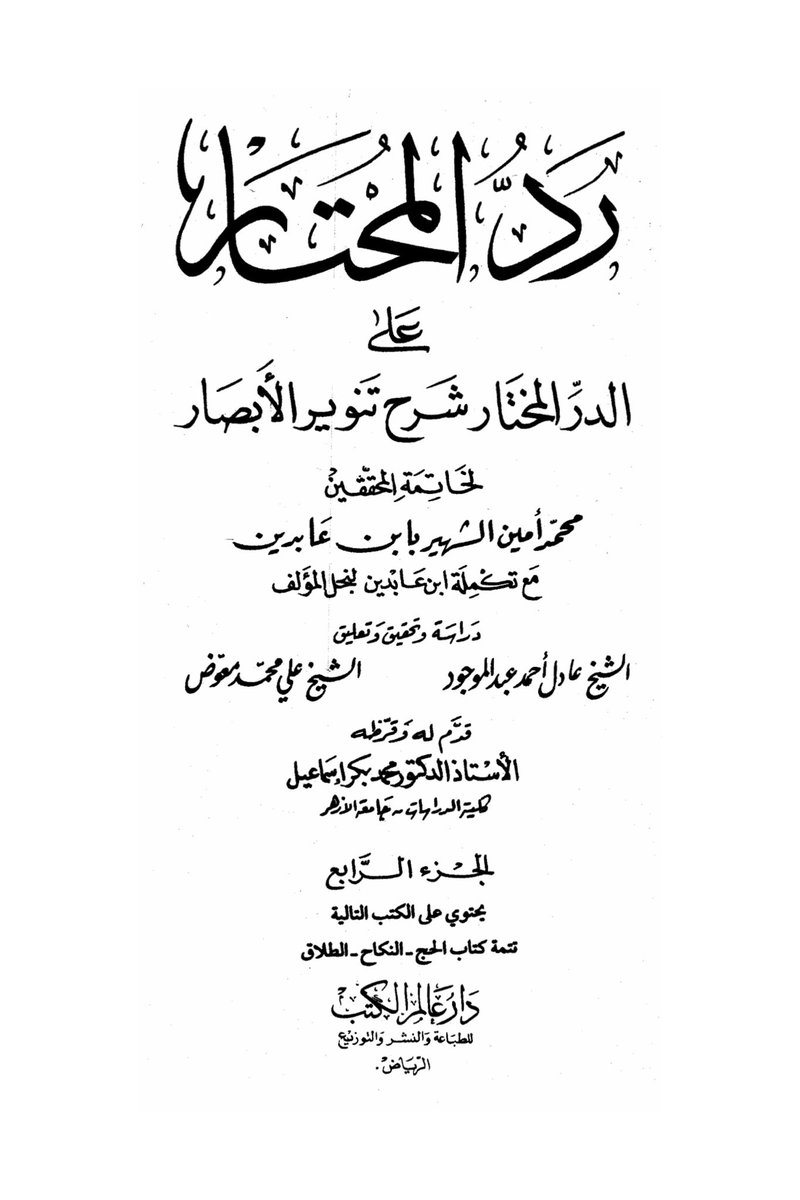

24) Najm al-Dīn al-Ghazzī (d. 1061), the Shāfiʿī Imām, says that the narration of al-ʿUtbī has been quoted and accepted by the scholars of Manāsik from all Madhāhib.




25) Ibn ʿAsākir (d. 571), Ḥāfidh al-Dunyā, in his 80 volume “Tārīkh Dimashq”, mentions the narration of al-ʿUtbī in which a man sought intercession from the Prophet ﷺ.




26) al-Munāwī (d. 1031), in his famous work “Fayḍ al-Qadīr”, defends Tawassul and Istighāthah and quotes al-Subkī on the matter.




27) al-Suyūṭī, the great Shaykh al-Islām, mentions the story of al-ʿUtbī under his explanation for the verse regarding the days after Ḥajj (al-Qurān 2:203)




28) Ibn Ḥajar al-ʿAsqalānī (d. 852), Khātimah al-Ḥuffādh, did Tawassul many times in his poetry. One of them: “At your generous door, O Prophet, stands a sinful servant. O best of people, with a shining face. He seeks closeness through you, hoping for forgiveness for his sins.”




29) Ibn ʿAsākir -Abū al-Yaman- (d. 686) quotes his teacher Ibn al-Ṣalāḥ saying that what is mentioned in the narration of al-ʿUtbī is the most beautiful thing one can say when visiting the Messenger ﷺ




30) al-Buhūtī (d. 1051), an extremely important Ḥanbalī Imām, mentions the narration of al-ʿUtbī as a “benefit” in the book of Ḥajj in his work “Kashshāf al-Qināʿ”.




31) al-Ḥajjāwī (d. 968), the Ḥanbalī Faqīh, says: “And there is no issue in Tawassul through the righteous.”




32) al-Mardāwī (d. 885), Shaykh al-Madhhab, says that the correct opinion in the Ḥanbalī Madhhab is the permissibility of Tawassul with righteous individuals, and then goes on to quote his Imām Aḥmad b. Ḥanbal allowing Tawassul with the Prophet ﷺ.




33) Ibn Mufliḥ (d. 883), Burhān al-Dīn, mentions the story of al-ʿUtbī in the section of “the desirability of visiting the Prophet ﷺ”.


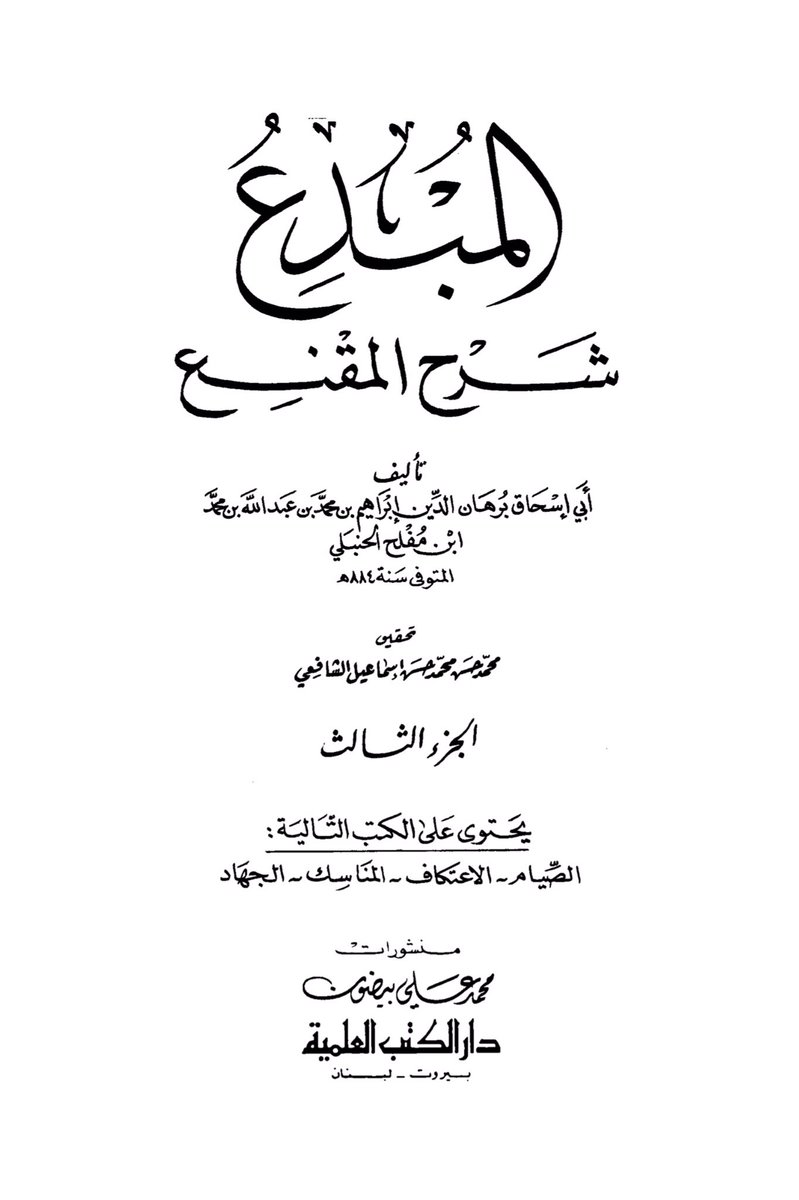

34) Ibn ʿAqīl (d. 513), Shaykh al-Ḥanābilah, says that one should say in Ziyārah: “O Allāh, I turn to You through Your Prophet, the Prophet of Mercy. O Messenger, I turn to my Lord through you, seeking His forgiveness for my sins. O Allāh, I ask You by his right, to forgive me.”




35) ʿAbd al-Qādir al-Jīlānī (d. 561), Sulṭān al-Awliyāʾ, advises the visitor to say: “O Allāh, I turn to You through Your Prophet, the Prophet of Mercy. O Prophet, I turn to Him through you, seeking His forgiveness. O Allāh, I ask You by his right, to forgive me and have mercy.”




36) al-Taqī al-Ḥiṣnī (d. 829), the Shāfiʿī author of the famous book “Kifāyah al-Akhyār”, defends Istighāthah through the Prophet ﷺ in his work titled “Dafʿ Shubah Man Shabbah Wa Tamarrad”.




37) Ibn ʿAllān (d. 1057), in his commentary on “al-Adhkār” by al-Nawawī, includes a whole paragraph on Tawassul and Istighāthah. He says that al-Subkī was right on the matter.




38) al-Samhūdī (d. 922), in his abridgement of his famous work “Wafāʾ al-Wafā”, includes a chapter on Tawassul, which he begins by saying “Tashaffuʿ and Tawassul through the Prophet ﷺ and his status and virtue are from the traditions of the messengers and the righteous Salaf.”




39) al-Dimyāṭī (d. 1300), in his beautiful work “Iʿānah al-Ṭālibīn”, says that it is recommended to say what is narrated in the story of al-ʿUtbī while visiting the Messenger ﷺ.




40) Badr al-Dīn al-ʿAynī (d. 855), author of the greatest commentary on Ṣaḥīḥ al-Bukhārī without a doubt, says in the introduction of his work: “...while I perform Tawassul through the Prophet ﷺ, the best of creation, and his noble family and companions.”




41) al-Zabīdī (d. 893) says in the introduction of his Mukhtaṣar of Ṣaḥīḥ al-Bukhārī: “And what I seek from Allāh is to benefit from this work.......and to reform our purposes and actions by the status of our master Muḥammad ﷺ and his family and all his companions.”




42) Khalīl b. Isḥāq (d. 776), author of “Mukhtaṣar Khalīl” which is undoubtedly the most important Mukhtaṣar in the Mālikī Madhhab, says: “And let him do Tawassul through him ﷺ and ask Allāh by his virtue, for he is the refuge from the burdens of sins...




...and the weight of transgressions, because the blessing and greatness of his intercession with his Lord cannot be magnified by any sin. And whoever believes otherwise is deprived, as Allāh has blinded his insight and misguided his perception.”




43) al-Zarqānī (d. 1122), a Mālikī scholar, quotes the statement of Khalīl (see above) while strongly defending Tawassul and Istighāthah, in his blessed explanation of “al-Mawāhib al-Laduniyyah”.




44) al-Qasṭallānī (d. 923) includes a section on Tawassul in his famous work “al-Mawāhib al-Laduniyyah”, which he begins by saying: “And it is befitting for the visitor to increase prayers and supplications, as well as Istighāthah, Tashaffuʿ, and Tawassul through him ﷺ.”




45) al-Qāḍī ʿIyāḍ (d. 544), in his blessed work “al-Shifā”, quotes his Imām Mālik b. Anas prescribing Tashaffuʿ (seeking intercession) through the Prophet ﷺ, and approves of it.




46) Yūsuf al-Nabhānī (d. 1350) wrote an entire book defending Istighāthah against the claims of Ibn Taymiyyah.




47) Ibn Farḥūn (d. 799), a Mālikī Faqīh, says in his book on Manāsik: “And indeed, O Messenger of Allāh, I have wronged myself, and I have come seeking forgiveness for my sins, seeking your intercession with my Lord, hoping for His forgiveness through your intercession.......”




48) al-Qurṭubī (d. 671), under his explanation of al-Qurān 4:64, mentions a story about Tashaffuʿ, similar to the story of al-ʿUtbī, and accepts it.




49) Aḥmad b. Ḥanbal (d. 241), Imām of Ahl al-Sunnah by consensus, said when he got lost on his way to Ḥajj, “O slaves of Allāh (angels), show us the path!”. He kept saying this till he found the right path.




50) Ibn Qudāmah (d. 620), in his famous work “al-Mughnī”, advises the visitor to say: “I have come to you seeking forgiveness for my sins, seeking your intercession with my Lord. O Lord, grant me forgiveness as You have granted it to those who visited him while he was alive....”




52) al-Qalqashandī (d. 821) says that after the passing of the Prophet ﷺ, people used to write letters to him containing Tawassul and Tashaffuʿ, especially those unable to visit him ﷺ from those who live in far-away lands.




53) al-Surramarrī (d. 776) says that the fact that we can do Tawassul and Tashaffuʿ through the Prophet ﷺ is from his miracles.




54) Ibn al-Nuʿmān (d. 683) authored an entire work on Istighāthah which he named “Miṣbāḥ al-Dhalām”.




55) al-Ṭūfī (d. 716) says that the book about Istighāthah “Miṣbāḥ al-Dhalām” (see above) was accepted by the consensus of the entire Ummah at the time it was written. He then says that the Ijmāʿ of every time period is Ḥujjah, and then proceeds to defend Istighāthah himself.




57) Ibn al-Ḥajjāj (d. 391), a famous early poet, said in his poetry: “Seek intercession with the Prophet, for every slave who seeks intercession with him shall have his prayers answered.”




58) Mūsā al-Ḥājib (d. 756) used to frequently read the verse of poetry about Tashaffuʿ mentioned above, with a slight variation.




60) al-Badr b. Jamāʿah (d. 733) said that Ibn Taymiyyah disallowing Istighāthah through the Prophet ﷺ is a lack of manners, and strongly rejects what he said.



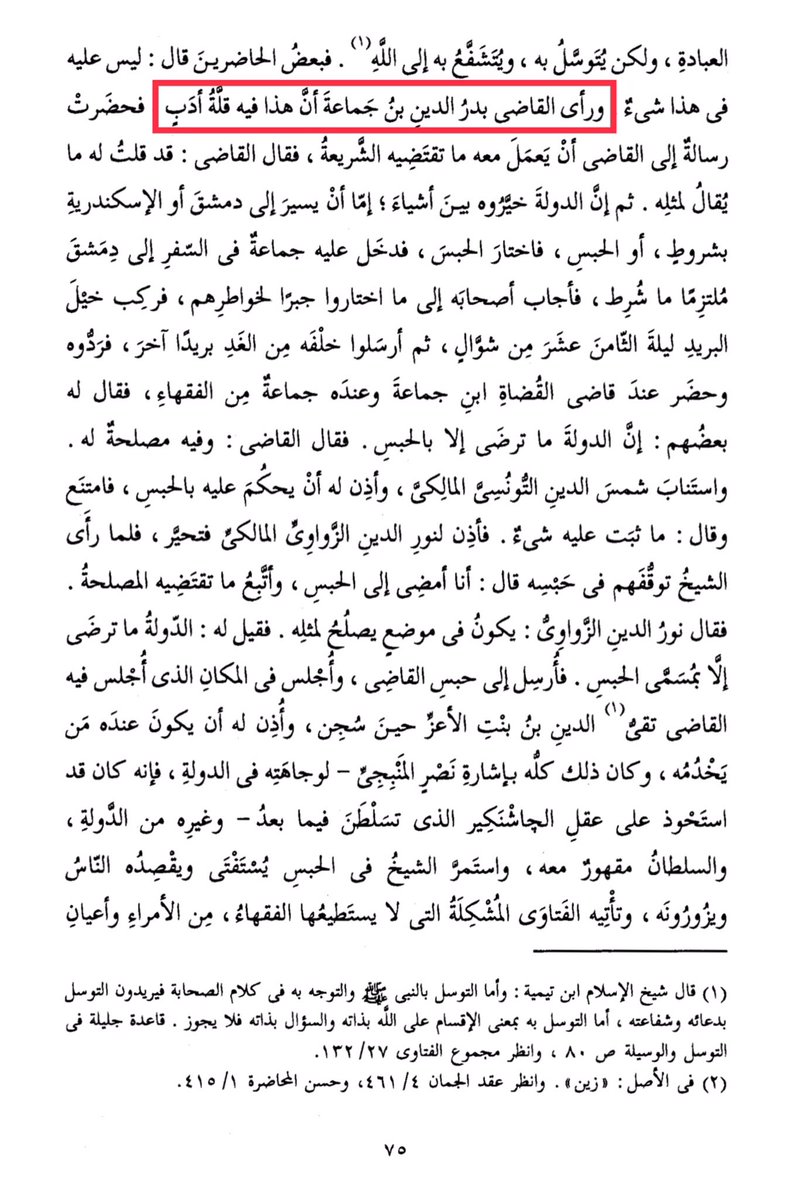
62) Ibn al-Jazarī, Shaykh al-Qurrāʾ (d. 833) says that performing Tawassul through prophets and righteous individuals is from the etiquettes of Duʿāʾ.




64) Ibn al-Subkī (d. 771) says that his father's work in which he refuted Ibn Taymiyyah, “Shifā al-Siqām”, should be read to laymen to teach them the permissibility of Istighāthah.


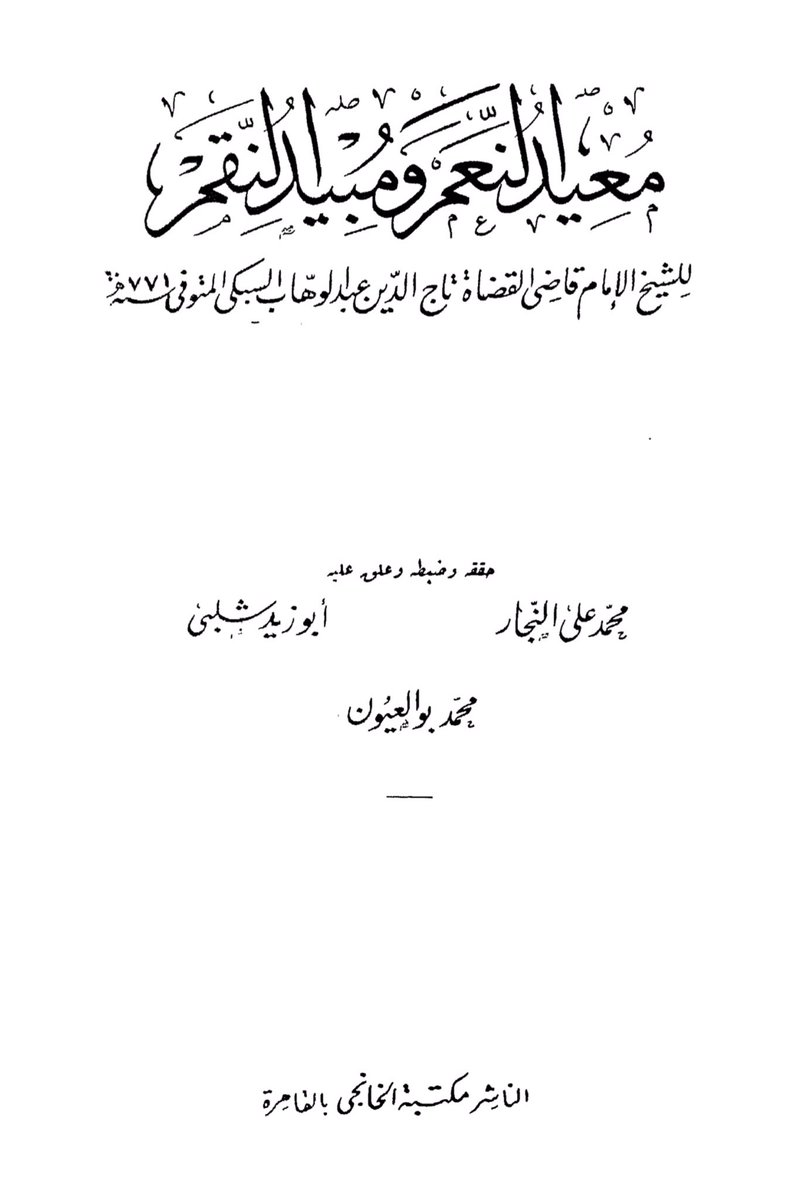

65) Aḥmad Zaynī Daḥlān (d. 1304) allows Tawassul and Istighāthah in his book “Fitnah al-Wahhābiyyah”.




66) al-Sirāj al-Bulqīnī (d. 805), Mujaddid of the 8th century, was asked about poetry with Istighāthah and someone who prohibited it. He said that the one who prohibited it is a Jāhil and a causer of Fitnah, then refutes his arguments in dozens of pages.




69) al-ʿIrāqī, Zayn al-Dīn (d. 806) says that “Shifāʾ al-Siqām” by al-Subkī purified the hearts of the believers.




70) al-Damīrī (d. 808), says that it is recommended to do Tawassul and Tashaffuʿ through the Messenger ﷺ during Ziyārah, cites the narration of al-Ḥākim about the Tawassul of Ādam ﷺ, and says that what is mentioned in the narration of al-ʿUtbī is the best thing one can say.




72) al-ʿUqbānī (d. 811) accepts the verses of Tawassul in the Burdah, and explains them in his commentary.




73) al-Ghazzī, Badr al-Dīn (d. 984) shows no opposition to the Tawassul in the Burdah, and explains it in his commentary.




74) Ibn al-Ṣabbāgh (d. 477), an important Shāfiʿī Faqīh, mentions the narration of al-ʿUtbī at the end of the chapter of Ḥajj in his book “al-Shāmil”.




76) al-Ṭabarī, Muḥibb al-Dīn (d. 694), mentions the Tashaffuʿ of Muḥammad b. Kaʿb al-Hilālī in the chapter of visiting the Prophet ﷺ.




77) al-Sakhāwī, ʿAlam al-Dīn (d. 642) mentions the Tashaffuʿ of al-ʿUtbī under his explanation of 4:64, in his Tafsīr.




78) al-Sakhāwī, Shams al-Dīn (d. 902) mentions the Tashaffuʿ of al-ʿUtbī in his masterpiece “al-Qawl al-Badīʿ”.




80) Ibn Mufliḥ, Shams al-Dīn (d. 763), says: “And Tawassul (seeking intermediary) with a righteous individual is allowed...”




87) al-Fayrūzābādī (d. 817) teaches us what to say while visiting the Messenger ﷺ: “...I have come to you, admitting my sins, seeking you as an intermediary to my Lord.....And I ask you, O Messenger, to intercede for me...”




88) al-Ashkhar (d. 991) agrees with al-Subkī on the permissibility and desirability of Tawassul, Tashaffuʿ and Istighāthah.




89) al-Shādhilī (d. 656), founder of the famous Shādhilī order, says “Whoever has a need from Allāh ﷻ, then let him perform Tawassul through al-Imām Abū Ḥāmid al-Ghazālī.”




90) al-Khalwatī (d. 1088), a Ḥanbalī Faqīh, recommends the visitor to say “I have come to you, repenting from my sins, seeking your intercession with my Lord, so intercede for me, O interceder of the Ummah, and save me from hellfire”.




91) Ibn al-Najjār (d. 972), says in “Muntahā al-Irādāt” which is one of the most important books in the Ḥanbalī Madhhab, “Tawassul with righteous individuals is permitted.”




92) al-Sāmirī (d. 616), another Ḥanbalī Faqīh, tells us to say “O Allāh, I turn to You through Your Prophet, the Prophet of Mercy. O Messenger, I turn to my Lord through you, seeking His forgiveness for my sins. O Allāh, I ask You by his right, to forgive me.”




94) Ibn Badrān (d. 1346), a Ḥanbalī scholar, says that the one who seeks aid with the Prophet ﷺ shall have an apparent victory.




95) Ibn al-Jawzī (d. 571) says “With the (lofty) status you have in the sight of Allāh, be an intercessor for me.”




96) al-Laqqānī (d. 1041), author of the famous “Jawharah al-Tawḥīd”, says: “There is nothing that has been tried when one is in a state of hardship more successful than Tawassul through the Prophet ﷺ”. He then narrates a poem of his, containing Tawassul and Istighāthah.


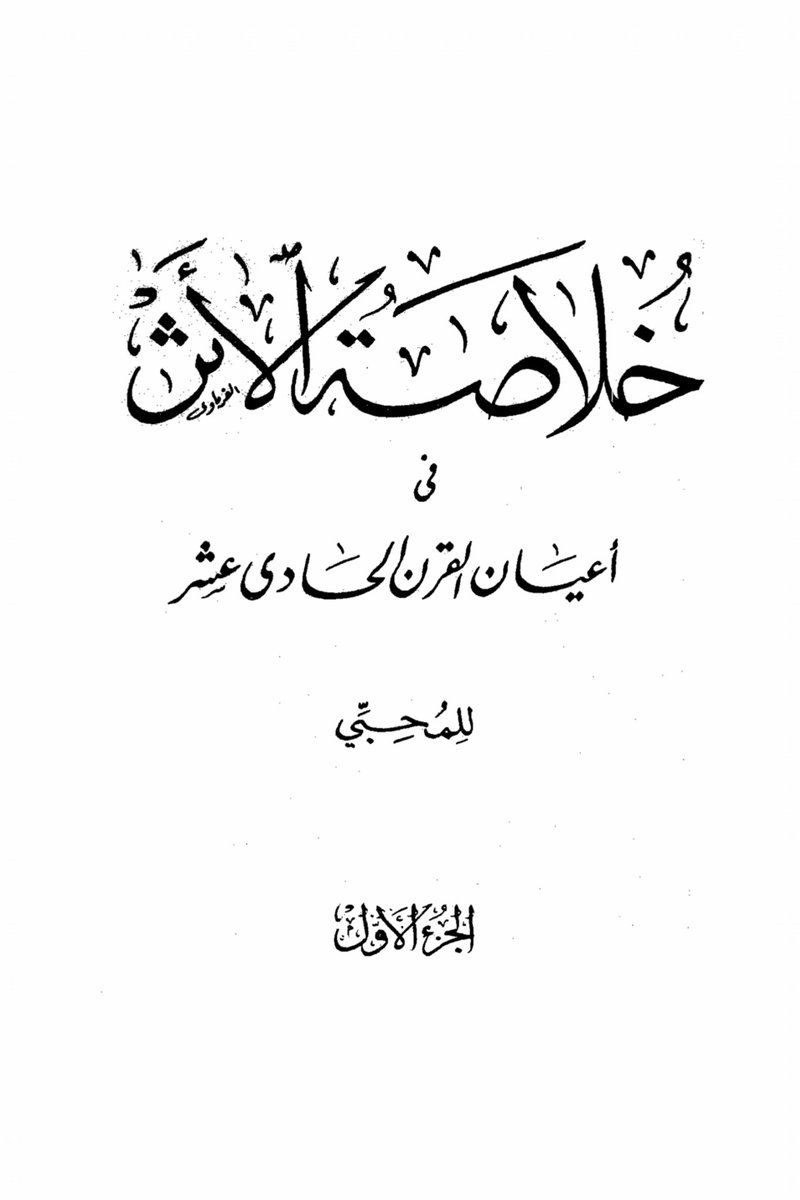

97) ʿAbd al-Bāqī al-Mawāhibī (d. 1071), a Ḥanbalī scholar, performs Tawassul and Istighāthah in his poetry: “I seek your urgent help in removing our distress... And that our mistake be erased, O leader of Messengers!” Narrated by his student Ibn ʿAwaḍ al-Maqdisī (d. >1180).




98) Ḥammād b. ʿAbd al-Wāḥid (d. 1240) said in his poetry: “Help us, O best of Allāh's creation, in times of distress... For indeed, O Messenger of Allāh, we are in a state of hardship.”


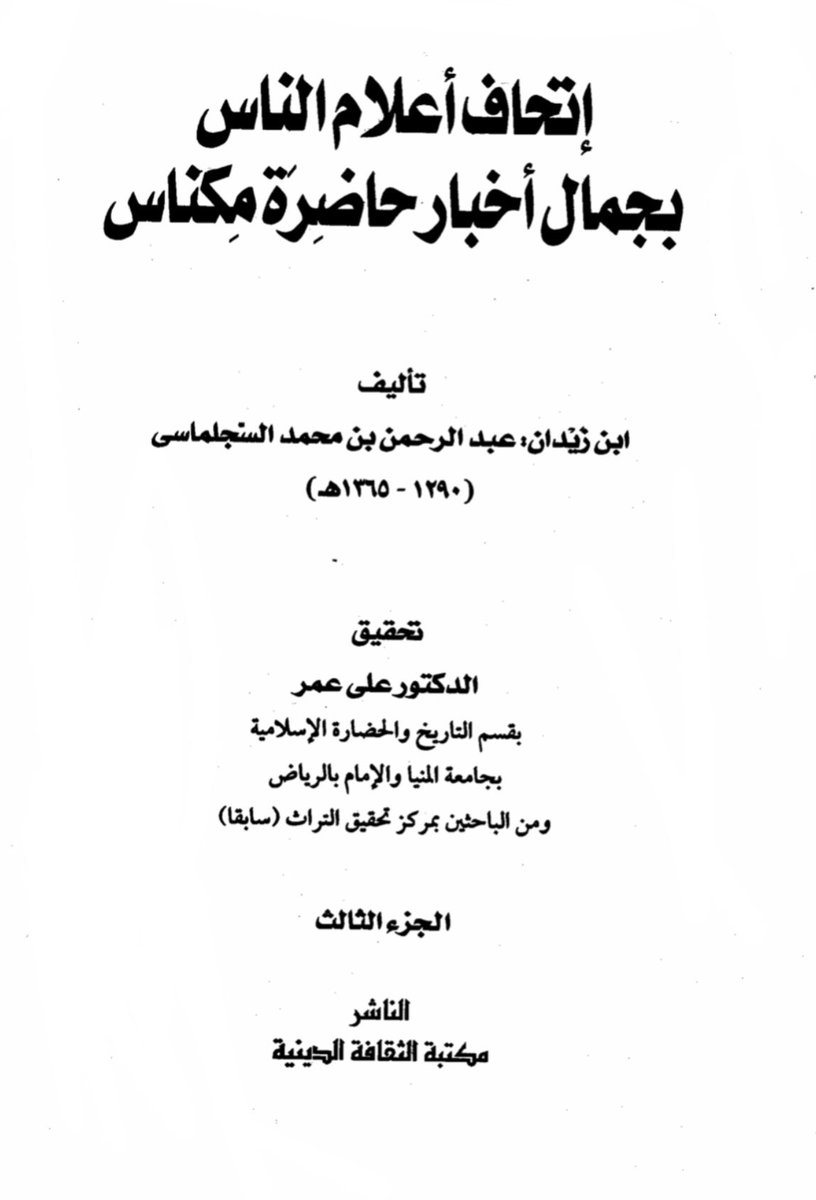

99) Ibn Bint al-Aʿazz (d. 695) performed Istighāthah through the Prophet ﷺ after his pilgrimage, as many historians recorded.




• • •
Missing some Tweet in this thread? You can try to
force a refresh







